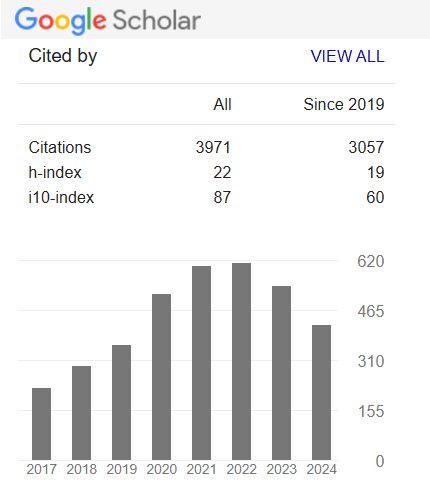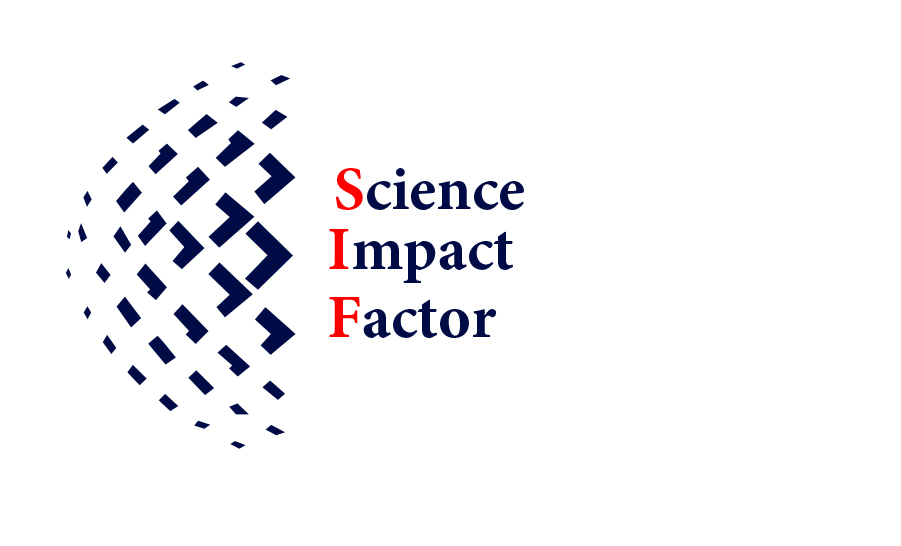AI Integration in Lung Scaffolds for Biomaterial Selection and Properties
Keywords:
lung tissue engineering, biomaterials, scaffold properties, artificial intelligence, tissue engineeringAbstract
Chronic lung diseases, including emphysema, interstitial fibrosis, and pulmonary vascular diseases, are the third leading cause of death worldwide, affecting more than 500 million people. These diseases are currently treated with lung transplantation when other medical therapies fail; however, there are significant challenges including donor shortages and high mortality rates, with over 75% of implanted lungs failing within 10 years. To address these limitations, lung tissue engineering (LTE) has emerged as an alternative approach to treat chronic lung diseases by transplanting functional bioengineered lungs. This review article aims to highlight the importance of biomaterial selection and to analyze the chemical and mechanical properties that are ideal for lung scaffolds. In this paper, AI applications in various LTE technologies that support the optimization of biomaterial selection and scaffold design are explored. The discussion of these topics gives a comprehensive overview of the material properties and emerging AI technologies improving the designs of lung scaffolds and their functionality. The integration of AI in scaffold design will produce progress in LTE as it will lead to more effective lung scaffolds.
Downloads
References
Andrikakou, P., Vickraman, K., & Arora, H. (2016). On the behaviour of lung tissue under tension and compression. Scientific Reports, 6, 36642. https://doi.org/10.1038/srep36642
Ashammakhi, N., GhavamiNejad, A., Tutar, R., Fricker, A., Roy, I., Chatzistavrou, X., Hoque Apu, E., Nguyen, K.-L., Ahsan, T., Pountos, I., & Caterson, E. J. (2022). Highlights on Advancing Frontiers in Tissue Engineering. Tissue Engineering Part B: Reviews, 28(3), 633–664. https://doi.org/10.1089/ten.teb.2021.0012
Calle, E. A., Ghaedi, M., Sundaram, S., Sivarapatna, A., Tseng, M. K., & Niklason, L. E. (2014). Strategies for Whole Lung Tissue Engineering. IEEE Transactions on Biomedical Engineering, 61(5), 1482–1496. https://doi.org/10.1109/TBME.2014.2314261
Chan, B. P., & Leong, K. W. (2008). Scaffolding in tissue engineering: General approaches and tissue-specific considerations. European Spine Journal, 17(S4), 467–479. https://doi.org/10.1007/s00586-008-0745-3
Cosson, S., Otte, E. A., Hezaveh, H., & Cooper-White, J. J. (2015). Concise Review: Tailoring Bioengineered Scaffolds for Stem Cell Applications in Tissue Engineering and Regenerative Medicine. Stem Cells Translational Medicine, 4(2), 156–164. https://doi.org/10.5966/sctm.2014-0203
Doryab, A., & Schmid, O. (2022). Bioactive Cell-Derived ECM Scaffold Forms a Unique Cellular Microenvironment for Lung Tissue Engineering. Biomedicines, 10(8), 1791. https://doi.org/10.3390/biomedicines10081791
Edwards, Z., & Annamaraju, P. (2023). Physiology, Lung Compliance. In StatPearls. https://www.ncbi.nlm.nih.gov/books/NBK554517/
Egorikhina, M. N., Bronnikova, I. I., Rubtsova, Y. P., Charykova, I. N., Bugrova, M. L., Linkova, D. D., & Aleynik, D. Ya. (2021). Aspects of In Vitro Biodegradation of Hybrid Fibrin–Collagen Scaffolds. Polymers, 13(20), 3470. https://doi.org/10.3390/polym13203470
Feng, J., Liu, B., Lin, Z., & Fu, J. (2021). Isotropic porous structure design methods based on triply periodic minimal surfaces. Materials & Design, 210, 110050. https://doi.org/10.1016/j.matdes.2021.110050
Frantz, C., Stewart, K. M., & Weaver, V. M. (2010). The extracellular matrix at a glance. Journal of Cell Science, 123(24), 4195–4200. https://doi.org/10.1242/jcs.023820
Gharibshahian, M., Torkashvand, M., Bavisi, M., Aldaghi, N., & Alizadeh, A. (2024). Recent advances in artificial intelligent strategies for tissue engineering and regenerative medicine. Skin Research and Technology, 30(9), e70016. https://doi.org/10.1111/srt.70016
Gilpin, S. E., & Wagner, D. E. (2018). Acellular human lung scaffolds to model lung disease and tissue regeneration. European Respiratory Review, 27(148), 180021. https://doi.org/10.1183/16000617.0021-2018
Gould, G. S., Hurst, J. R., Trofor, A., Alison, J. A., Fox, G., Kulkarni, M. M., Wheelock, C. E., Clarke, M., & Kumar, R. (2023). Recognising the importance of chronic lung disease: A consensus statement from the Global Alliance for Chronic Diseases (Lung Diseases group). Respiratory Research, 24(1), 15. https://doi.org/10.1186/s12931-022-02297-y
Griffin, M., Premakumar, Y., Seifalian, A., Butler, P. E., & Szarko, M. (2016). Biomechanical Characterization of Human Soft Tissues Using Indentation and Tensile Testing. Journal of Visualized Experiments : JoVE, 118, 54872. https://doi.org/10.3791/54872
Guo, J. L., Januszyk, M., & Longaker, M. T. (2023). Machine Learning in Tissue Engineering. Tissue Engineering Part A, 29(1–2), 2–19. https://doi.org/10.1089/ten.tea.2022.0128
Hackett, T. L., & Osei, E. T. (2021). Modeling Extracellular Matrix-Cell Interactions in Lung Repair and Chronic Disease. Cells, 10(8), 2145. https://doi.org/10.3390/cells10082145
Hakim Khalili, M., Zhang, R., Wilson, S., Goel, S., Impey, S. A., & Aria, A. I. (2023). Additive Manufacturing and Physicomechanical Characteristics of PEGDA Hydrogels: Recent Advances and Perspective for Tissue Engineering. Polymers, 15(10), Article 10. https://doi.org/10.3390/polym15102341
Hesselmann, F., Arnemann, D., Bongartz, P., Wessling, M., Cornelissen, C., Schmitz-Rode, T., Steinseifer, U., Jansen, S. V., & Arens, J. (2022). Three-dimensional membranes for artificial lungs: Comparison of flow-induced hemolysis. Artificial Organs, 46(3), 412–426. https://doi.org/10.1111/aor.14081
Homaeigohar, S., & Boccaccini, A. R. (2022). Nature-Derived and Synthetic Additives to poly(ɛ-Caprolactone) Nanofibrous Systems for Biomedicine; an Updated Overview. Frontiers in Chemistry, 9. https://doi.org/10.3389/fchem.2021.809676
Huzum, B., Puha, B., Necoara, R. M., Gheorghevici, S., Puha, G., Filip, A., Sirbu, P. D., & Alexa, O. (2021). Biocompatibility assessment of biomaterials used in orthopedic devices: An overview (Review). Experimental and Therapeutic Medicine, 22(5), 1315. https://doi.org/10.3892/etm.2021.10750
Kular, J. K., Basu, S., & Sharma, R. I. (2014). The extracellular matrix: Structure, composition, age-related differences, tools for analysis and applications for tissue engineering. Journal of Tissue Engineering, 5, 2041731414557112. https://doi.org/10.1177/2041731414557112
Lata, S., Sharma, B. K., & Raghava, G. P. S. (2007). Analysis and prediction of antibacterial peptides. BMC Bioinformatics, 8, 263. https://doi.org/10.1186/1471-2105-8-263
Lee, K. Y., & Mooney, D. J. (2012). Alginate: Properties and biomedical applications. Progress in Polymer Science, 37(1), 106–126. https://doi.org/10.1016/j.progpolymsci.2011.06.003
Liu, S., Yu, J.-M., Gan, Y.-C., Qiu, X.-Z., Gao, Z.-C., Wang, H., Chen, S.-X., Xiong, Y., Liu, G.-H., Lin, S.-E., McCarthy, A., John, J. V., Wei, D.-X., & Hou, H.-H. (2023). Biomimetic natural biomaterials for tissue engineering and regenerative medicine: New biosynthesis methods, recent advances, and emerging applications. Military Medical Research, 10, 16. https://doi.org/10.1186/s40779-023-00448-w
Lü, L., Shen, H., Kasai, D., & Yang, Y. (2022). Fabrication and Characterization of Alveolus-Like Scaffolds with Control of the Pore Architecture and Gas Permeability. Stem Cells International, 2022, 1–12. https://doi.org/10.1155/2022/3437073
Makadia, H. K., & Siegel, S. J. (2011). Poly Lactic-co-Glycolic Acid (PLGA) as Biodegradable Controlled Drug Delivery Carrier. Polymers, 3(3), 1377. https://doi.org/10.3390/polym3031377
McDonald, S. M., Augustine, E. K., Lanners, Q., Rudin, C., Catherine Brinson, L., & Becker, M. L. (2023). Applied machine learning as a driver for polymeric biomaterials design. Nature Communications, 14(1), 4838. https://doi.org/10.1038/s41467-023-40459-8
McInnes, A. D., Moser, M. A. J., & Chen, X. (2022). Preparation and Use of Decellularized Extracellular Matrix for Tissue Engineering. Journal of Functional Biomaterials, 13(4), 240. https://doi.org/10.3390/jfb13040240
Moon, S. H., Hwang, H. J., Jeon, H. R., Park, S. J., Bae, I. S., & Yang, Y. J. (2023). Photocrosslinkable natural polymers in tissue engineering. Frontiers in Bioengineering and Biotechnology, 11. https://doi.org/10.3389/fbioe.2023.1127757
Morais, J. M., Papadimitrakopoulos, F., & Burgess, D. J. (2010). Biomaterials/Tissue Interactions: Possible Solutions to Overcome Foreign Body Response. The AAPS Journal, 12(2), 188–196. https://doi.org/10.1208/s12248-010-9175-3
Naumann, J., Koppe, N., Thome, U. H., Laube, M., & Zink, M. (2022). Mechanical properties of the premature lung: From tissue deformation under load to mechanosensitivity of alveolar cells. Frontiers in Bioengineering and Biotechnology, 10, 964318. https://doi.org/10.3389/fbioe.2022.964318
Nichols, J. E., Niles, J. A., & Cortiella, J. (2009). Design and development of tissue engineered lung: Progress and challenges. Organogenesis, 5(2), 57–61. https://doi.org/10.4161/org.5.2.8564
Nosrati, H., & Nosrati, M. (2023). Artificial Intelligence in Regenerative Medicine: Applications and Implications. Biomimetics, 8(5), 442. https://doi.org/10.3390/biomimetics8050442
O’Brien, F. J. (2011). Biomaterials & scaffolds for tissue engineering. Materials Today, 14(3), 88–95. https://doi.org/10.1016/S1369-7021(11)70058-X
Onal, S., Alkaisi, M. M., & Nock, V. (2022). Microdevice-based mechanical compression on living cells. iScience, 25(12), 105518. https://doi.org/10.1016/j.isci.2022.105518
Prakash, Y. S., Tschumperlin, D. J., & Stenmark, K. R. (2015). Coming to terms with tissue engineering and regenerative medicine in the lung. American Journal of Physiology-Lung Cellular and Molecular Physiology, 309(7), L625–L638. https://doi.org/10.1152/ajplung.00204.2015
Revete, A., Aparicio, A., Cisterna, B. A., Revete, J., Luis, L., Ibarra, E., Segura González, E. A., Molino, J., & Reginensi, D. (2022). Advancements in the Use of Hydrogels for Regenerative Medicine: Properties and Biomedical Applications. International Journal of Biomaterials, 2022, 3606765. https://doi.org/10.1155/2022/3606765
Sajkiewicz, P., & Kołbuk, D. (2014). Electrospinning of gelatin for tissue engineering – molecular conformation as one of the overlooked problems. Journal of Biomaterials Science, Polymer Edition, 25(18), 2009–2022. https://doi.org/10.1080/09205063.2014.975392
Santis, M. M. D., Bölükbas, D. A., Lindstedt, S., & Wagner, D. E. (2018). How to build a lung: Latest advances and emerging themes in lung bioengineering. European Respiratory Journal, 52(1). https://doi.org/10.1183/13993003.01355-2016
Sarabia-Vallejos, M. A., Ayala-Jeria, P., & Hurtado, D. E. (2021). Three-Dimensional Whole-Organ Characterization of the Regional Alveolar Morphology in Normal Murine Lungs. Frontiers in Physiology, 12. https://doi.org/10.3389/fphys.2021.755468
Seadler, B. D., Toro, F., & Sharma, S. (2024). Physiology, Alveolar Tension. In StatPearls. StatPearls Publishing. http://www.ncbi.nlm.nih.gov/books/NBK539825/
Shakir, S., Hackett, T. L., & Mostaço-Guidolin, L. B. (2022). Bioengineering lungs: An overview of current methods, requirements, and challenges for constructing scaffolds. Frontiers in Bioengineering and Biotechnology, 10, 1011800. https://doi.org/10.3389/fbioe.2022.1011800
Shirani, A., Ganji, F., Golmohammadi, M., Hashemi, S. M., Mozafari, M., Amoabediny, G., Karkuki Osguei, N., & Samadikuchaksaraei, A. (2021). Cross-linked acellular lung for application in tissue engineering: Effects on biocompatibility, mechanical properties and immunological responses. Materials Science and Engineering: C, 122, 111938. https://doi.org/10.1016/j.msec.2021.111938
Soriano, J. B., Kendrick, P. J., & Paulson, K. R. (2020). Prevalence and attributable health burden of chronic respiratory diseases, 1990–2017: A systematic analysis for the Global Burden of Disease Study 2017. The Lancet. Respiratory Medicine, 8(6), 585–596. https://doi.org/10.1016/S2213-2600(20)30105-3
Suamte, L., Tirkey, A., Barman, J., & Jayasekhar Babu, P. (2023). Various manufacturing methods and ideal properties of scaffolds for tissue engineering applications. Smart Materials in Manufacturing, 1, 100011. https://doi.org/10.1016/j.smmf.2022.100011
Tonndorf, R., Aibibu, D., & Cherif, C. (2021). Isotropic and Anisotropic Scaffolds for Tissue Engineering: Collagen, Conventional, and Textile Fabrication Technologies and Properties. International Journal of Molecular Sciences, 22(17), 9561. https://doi.org/10.3390/ijms22179561
Downloads
Published
How to Cite
Issue
Section
License
Copyright (c) 2024 Tiffany Goh

This work is licensed under a Creative Commons Attribution-NonCommercial-NoDerivatives 4.0 International License.
Open Access This article is licensed under a Creative Commons Attribution 4.0 International License, which permits use, sharing, adaptation, distribution and reproduction in any medium or format, as long as you give appropriate credit to the original author(s) and the source, provide a link to the Creative Commons license, and indicate if changes were made. The images or other third party material in this article are included in the article’s Creative Commons license unless indicated otherwise in a credit line to the material. If the material is not included in the article’s Creative Commons license and your intended use is not permitted by statutory regulation or exceeds the permitted use, you will need to obtain permission directly from the copyright holder. To view a copy of this license, visit http://creativecommons.org/ licenses/by/4.0/










